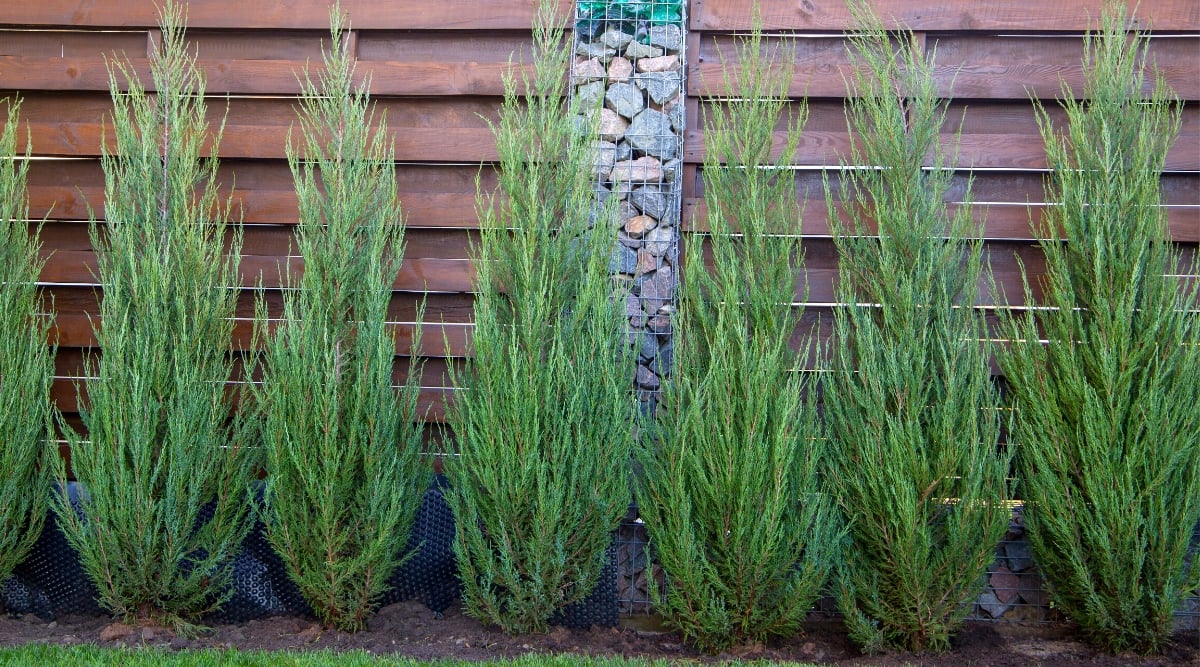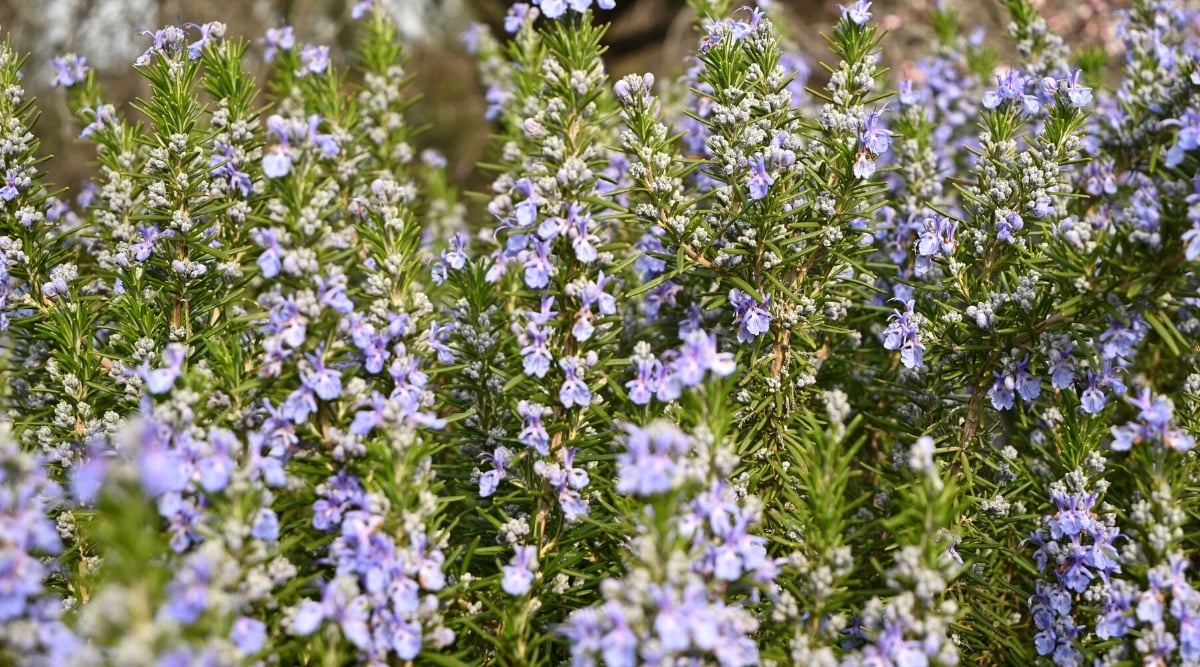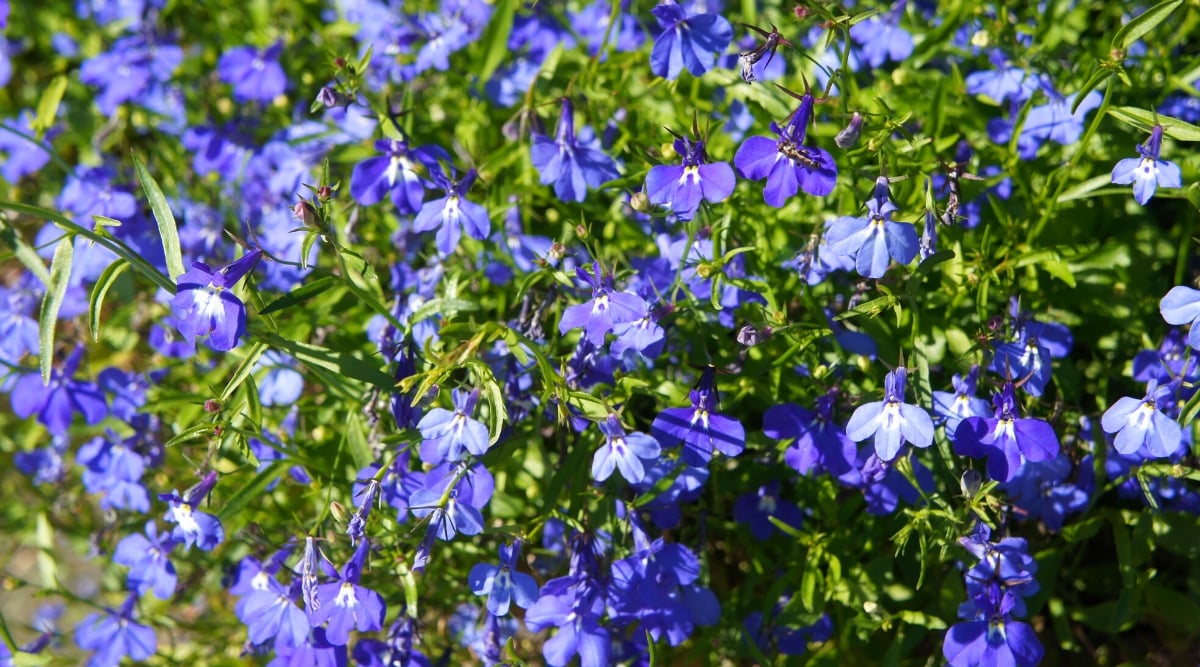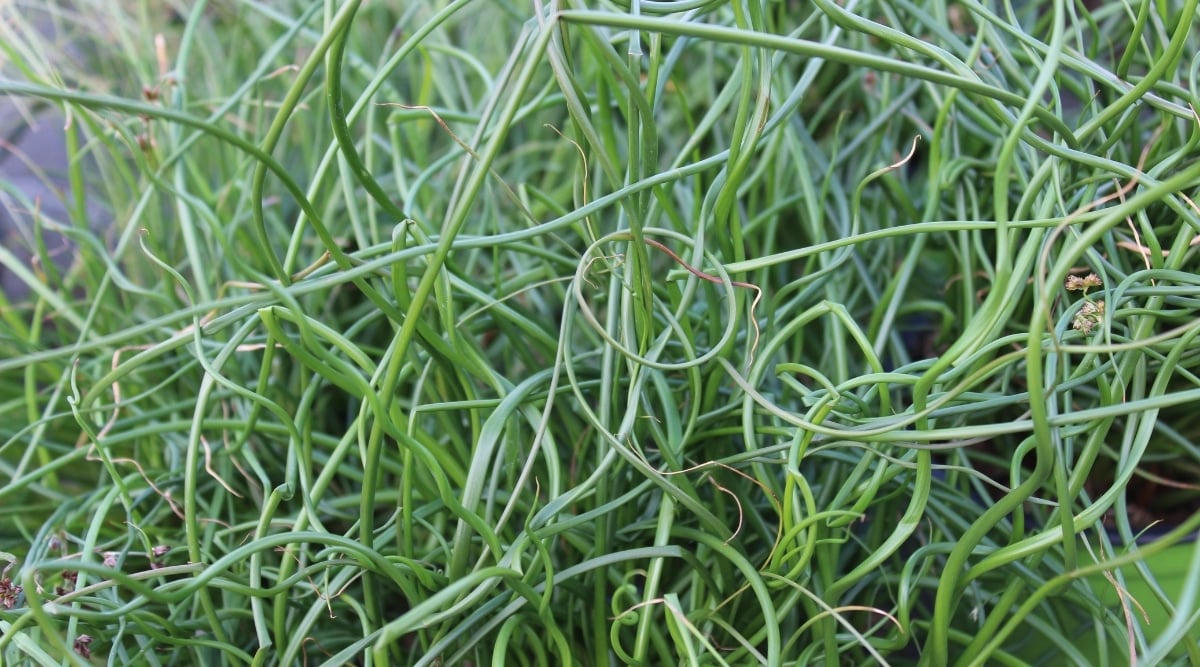27 Hardy Plants For Winter Container Gardens
Are you looking for some cold-hardy plants for your winter container garden? There are plenty of different options to choose from, no matter your hardiness zone. In this article, certified master gardener Laura Elsner walks through her favorite plants for winter container gardens.

Contents
Many gardeners tend to overlook winter. We leave our containers empty and wait until spring. But winter containers can be festive, interesting, and beautiful. You just need the right plants to come up with the perfect container gardening arrangement for wintertime.
Understanding your USDA hardiness zone is the first important step when choosing plants for the winter. Living in cold climates, plants in containers may perish through the winter months without proper care.
If you live in an area with no frosts or seldom frosts, you can put tropical plants and other perennials that don’t require a period of cold dormancy (peonies come to mind) into your containers. If you can find plants native to cooler climates, you can probably use them through the winter in your containers.
Here are some popular container plants to consider adding to your winter arrangements. Depending on your local hardiness zone, you are likely to find something on this list that will suit your container garden!
Juniper

|
|
botanical name Juniperus |
|---|---|
|
|
height Variety dependant |
|
|
hardiness zones Variety dependant |
With all containers, I like to approach them with a thriller, filler, and spiller concept. Winter containers are no exception. This means I like to have one thing that is the focal point of the pot. There should also be a few plants that fill the pot, adding texture and color. Lastly, I like to have a plant that spills down the sides of the container. Junipers can fill all these roles.
A thriller juniper could be a ‘Wichita Blue’ upright juniper. This variety is a dusty blue color and grows vertically in a nice pyramid shape. It can get very large but will stay smaller if placed in a container. If it outgrows the container, transplant it into the garden.
There are many filler junipers. I am partial to the ‘Calgary Carpet’ juniper as it is named after my hometown. This juniper is a nice medium green color with feathery evergreen foliage. This one also can get quite large.
But when you first purchase one, it will be the perfect size to go into a container. Another great choice for a filler juniper would be ‘Good Vibrations Gold’. The bright golden color of this variety is perfect for brightening up a winter display.
For spiller Junipers, choose a creeping variety. ‘Blue Lagoon’ is a blue creeping variety that will spill down if planted in a pot.
Dwarf English Boxwood

|
|
botanical name Buxus sempervirens ‘Suffruticosa’ |
|---|---|
|
|
height 3′ |
|
|
hardiness zones 6-9 |
The tight evergreen foliage of Boxwood is lovely in winter. It also looks great in containers. While I do love lots of varieties of Boxwood, I think the dwarf English is the best for containers. It only grows 2-4” tall and wide so it is perfect for containers.
They can also be pruned into perfect spheres for a formal look. Just a single round dwarf English Boxwood in a pot looks festive and elegant. Another option is purchasing a fake Boxwood sphere. If you find one that’s high-quality, it’s hard to tell the difference.
Ornamental Kale

|
|
botanical name Brassica oleracea |
|---|---|
|
|
height 1′ |
|
|
hardiness zones 2-11 |
Ornamental kale is a great way to add some color to your winter pots. They come in greens, whites, purples, and pinks. They are a round explosion of color. I like adding one underneath a thriller plant. Just tucked off to one side. The ruffled leaves add texture to a container, and the bright color lasts through the cold season.
I will often plant these in my garden in the spring, let them grow all summer, and then transplant them into a container in the fall.
You will save money by purchasing a small tray of them in the spring, and they are a low maintenance plant to grow. Choose a cooler site to plant them as they do not hold up well to lots of heat and humidity.
Winter Heather

|
|
botanical name Erica carnea |
|---|---|
|
|
height 1′ |
|
|
hardiness zones 5-7 |
Winter heather is a great textural element in a winter container. It also blooms and has a slight hue of color. This low-growing plant always shows up in garden centers in the fall/winter. It is low growing with tendrils of branches growing upwards and blooming tiny flowers of white or pink.
I like using winter heather as a filler plant in a winter container. It would look great under a large evergreen tree, such as a dwarf blue spruce tree.
Slowmound Mugo Pine

|
|
botanical name Pinus mugo ‘Slowmound’ |
|---|---|
|
|
height 2′ |
|
|
hardiness zones 2-7 |
Mugo pines are one of my favorite evergreen shrubs. However, they can grow quite large and stringy. That is why I prefer growing the dwarf variety of mugo pine.
This low-growing pine stays nice and compact. Dwarf mugo pine forms a nice little mound of piney foliage. A larger one could be used as a thriller plant in a container, or a small one could be tucked in and used as a filler plant in a large container arrangement.
If you can’t find a dwarf variety of mugo pine, you can prune a regular variety to keep it bushier. When they are growing their new growth, called candles, I simply cut or snap the new growth in half.
Pansies

|
|
botanical name Viola tricolor var. hortensis |
|---|---|
|
|
height 6″ |
|
|
hardiness zones 7-10 |
Is there anything pansies can’t do? They are a perfect spring flower, tolerating the final blast of cold weather. They are also the perfect winter flower.
Pansies look glorious when covered in a dusting of sparkling snow. They can handle temperatures as low as 23F (-5C). They make a great little filler plant to tuck into a winter display. If you live in a warm climate, they are probably already one of your go to flowers for winter. They thrive in cool temperatures.
I love the purple and yellow colors for spring, but pansies come in a wide range of colors. I prefer burgundy and blue colors for winter. Try Frizzle Sizzle ‘Burgundy” for a rich festive feel.
Coral Bells

|
|
botanical name Heuchera |
|---|---|
|
|
height Variety dependent) |
|
|
hardiness zones 4-9 |
Coral bells are a great little foliage filler plant for winter containers. This evergreen perennial covers a wide range of hardiness zones. Almost all gardeners can enjoy them in their winter arrangements.
They won’t be blooming in the winter months. But their colored foliage, and ruffled leaves have enough interest. They come in caramel, purple, yellow, and green. Some are frosted in silver and others have different details on their leaves.
Choose a variety that will stand out in a container with the other plants you’ve chosen. For instance, choose Primo ‘Wildberry’ coral bells to go next to a blue dwarf spruce tree. The purple and blue really complement each other.
Holly ‘Touch of Gold’

|
|
botanical name Ilex crenata ‘Adorned’ |
|---|---|
|
|
height 2′ |
|
|
hardiness zones 6-9 |
There are lots of varieties of holly that look great in containers. But I wanted to focus on ‘Touch of Gold‘ because it is the perfect little shrub to brighten up a container. Or it can fill a container on its own. It has a similar mounding form and leaf texture of a boxwood. But this evergreen shrub has bright yellow foliage.
This holly can be combined with a variety of other plants. I really like it next to bright red or orange foliage plants. Try it next to a ‘Southern Comfort’ coral bell for a rich warm combination.
Bergenia

|
|
botanical name Bergenia cordifolia |
|---|---|
|
|
height 18″ |
|
|
hardiness zones 3-8 |
Bergenia is a great hardy perennial. It has big waxy evergreen leaves. It’s commonly known as elephant ear. However, there are lots of plants with that name, so to avoid confusion, I use the scientific name. Bergenia is nothing over the top and won’t leave you in awe. But as a filler plant in a container it does the trick.
I like the smaller leaf varieties in containers. Try ‘Flirt’ for lots of layers of small glossy foliage in a winter container. Bergenia is a very hardy perennial, so if you’re worried about things surviving in pots where you live, bergenia is a great option.
Carex ‘Red Rooster’

|
|
botanical name Carex buchananii |
|---|---|
|
|
height 1-2′ |
|
|
hardiness zones 7-9 |
Carex grasses in general, make great winter container plants. The graceful grassy foliage blows in the wintery breeze. But ‘Red Rooster’ makes an excellent choice for a winter container because of its compact size and copper color.
‘Red Rooster’ can perfectly transition from a festive fall planter into your winter display. Pair it with rudbeckia and ornamental gourds in the fall for a warm autumn vibe. Then change out the filler to warm colored pansies and slowmound mugo pine to create a wintery feel.
Yew

|
|
botanical name Taxus Baccata |
|---|---|
|
|
height 40′ |
|
|
hardiness zones 3-8 |
Yews are a great tree for winter containers. In fact, they look great in containers year-round. This is a great solution for a formal, but simple look. Two yews in two large containers by the front door. They can be pruned into tight pyramids.
Yews are super hardy and not too fussy. They also will grow slowly in containers, which means they can last for years. Don’t get caught up on the height and width measurements provided. It takes decades for them to mature, and they will remain much smaller when grown in a container.
Baby Blue Spruce

|
|
botanical name Pineapple Pungens ‘Baby Blue’ |
|---|---|
|
|
height 20′ |
|
|
hardiness zones 3-7 |
You can actually use any blue spruce in a container. I’ve chosen ‘Baby Blue’ only because it remains a smaller size as it grows. If you want a tree in a container long term, I recommend a dwarf variety.
However, if you like to switch out plants seasonally, the exact variety won’t matter because it won’t grow in the winter month anyways. I recommend having a spot to transplant your container spruce to in the garden (remember, they can grow over 10′ wide and 50′ tall)
I like the blue color and sharp texture of a blue spruce tree. Pair with purple plants like bugleweed, hens and chicks, or a Primo ‘Black Pearl’ coral bell for a great color combo.
Hens and Chicks

|
|
botanical name Sempervivum |
|---|---|
|
|
height 6″ |
|
|
hardiness zones 3-8 |
There are lots of varieties of hens and chicks. They all belong to a group of plants known as sempervivum. These hardy little succulents make great additions to winter containers.
They make a great filler plant tucked under an evergreen tree or shrub. I especially like the ones that have a different color to them. ‘Red Lion’ for instance, features rosettes of red with just a peek of green.
If you like to change up containers seasonally, hens and chicks are great because they have a shallow root system and can be moved from the garden into containers and then back into your garden.
Hardy Cyclamen

|
|
botanical name Cyclamen persicum |
|---|---|
|
|
height 6″ |
|
|
hardiness zones 4-11 |
I know it’s winter in the desert when I see cyclamen. These plants are perfect for winter containers. They are flowering and gorgeous. Tuck them into containers underneath grasses or evergreen shrubs.
The foliage is attractive even when they are finished blooming. They have cute heart-shaped leaves. They also can be planted in the garden after they are finished blooming. Hardy cyclamen will die back in the summer months.
If you live in an area where you can’t grow them outside, they make great houseplants.
Red Hook Sedge

|
|
botanical name Uncinia rubra |
|---|---|
|
|
height 1′ |
|
|
hardiness zones 7-10 |
There aren’t too many plants that flower through the winter months, so finding plants that offer color through their foliage is key. Red hook sedge is a bright red grass that adds texture and color to winter containers. It makes a great thriller plant for the center of a pot. Or it can be used as a filler plant as a color contrast to another plant.
Try adding a red hook Sedge with a blue evergreen, like a ‘Wichita’ juniper or a dwarf blue spruce tree. This combination provides plenty of color without any flowers.
Sedum

|
|
botanical name Sedum |
|---|---|
|
|
height Variety dependant |
|
|
hardiness zones 3-11 (variety dependent) |
This is another plant I just couldn’t settle on a single variety. There are many different varieties of sedum. Some of them grow upright. Others creep and trail. They come in all sorts of colors and textures.
‘Autumn Joy’ is a beautiful upright variety that makes a great filler plant in a winter container. It has clusters of cauliflower-like flowers that blush res in the fall. ‘Angelina’ sedum is a bright green creeping variety that can trail down winter containers.
‘Dragon’s Blood’ sedum is a red trailing variety that will go great with green plants in a container like spruce and cedars.
Adam’s Needle Yucca

|
|
botanical name Yucca filamentosa |
|---|---|
|
|
height 4′ |
|
|
hardiness zones 4-10 |
This cold hardy yucca is a great way to add some structure to a winter container. The tall, sharp spikes of this evergreen plant. It provides a great focal point in the center or back of a winter container.
This is an extremely cold hardy variety that can withstand below-freezing temperatures. It also can be kept in the container year-round. You could switch out the filler plants seasonally. In a winter container, I would pair it with some softer textured plants, such as coral bells or winter heather.
Heavy snow and gusty winds can damage Adam’s needle. A container under an overhang or porch would provide some extra protection if you live in an area with heavy snow.
Dogwood

|
|
botanical name Cornus Sericea |
|---|---|
|
|
height 9′ |
|
|
hardiness zones 3-7 |
While dogwoods are not evergreen and will lose their leaves in the fall, the naked branches are brightly colored. They add a festive touch to containers. You can purchase a dogwood plant and plant it in a container and plant other winter plants around it.
You can also just snip off the branches of a dogwood already in your garden and stick the branches into your winter container. Flushing down your dogwood in your garden will make it flush up new brightly colored branches in the spring.
Dogwoods are traditionally red in color, but there are other varieties that have bright yellow stems (Cornus sericea ‘Flamiramea’). Don’t worry about the measurements. Dogwoods will not get that big in a container, and can easily be pruned back to its desired shape.
Rosemary

|
|
botanical name Salvia rosmarinus |
|---|---|
|
|
height 4′ |
|
|
hardiness zones 5-7 |
Rosemary is a perfect plant for winter containers. This evergreen shrub has festive needles, and it smells amazing. They can be pruned in various shapes to suit your style. Or you can even get a topiary one that is on a long narrow trunk.
The topiaries look especially nice in a winter container because it frees up the bottom of the pot to fill with all your favorite winter plants. As a bonus, you can snip off some of the plant for your holiday cooking.
Lobelia

|
|
botanical name Lobelia |
|---|---|
|
|
height 6″ |
|
|
hardiness zones 9-11 |
Lobelia is a sweet annual plant that has small blue flowers that fill or trail out of containers. I sadly do not plant much Lobelia anymore. I find the summers where I’m from have just gotten too hot and the plant fizzles out too quickly.
But if you live in a climate that has mild winters (i.e., no frost), Lobelia is a great winter plant. They thrive in cooler weather. Lobeila doesn’t like to dry out so plant them in a container with other water-loving cool season plants.
Poinsettia

|
|
botanical name Euphorbia pulcherrima |
|---|---|
|
|
height 3-10′ |
|
|
hardiness zones 9-11 |
Poinsettia is a no-brainer for winter containers if you live in a frost-free area. Purchase and place these cheery plants all around your mixed winter containers. Or just have large ones out on their own. They range in colors from pink, white, and classic red.
I think they’re perfect to just tuck into existing containers for an instant festive flair. You don’t even have to take them out of the pot they came in. Then once they fade and the holidays are ending, remove them.
Of course, if you do live in an area with freezing winters, just enjoy these beauties indoors over the holidays.
Dinosaur Kale

|
|
botanical name Brassica oleracea |
|---|---|
|
|
height 2′ |
|
|
hardiness zones 2-11 |
Dinosaur kale is a perfect cool-weather crop. Not only is it delicious and nutritious, it is also beautiful. This leafy green is tall with very dark green, almost purple, foliage. It is crinkled and ruffled with a distinctly prehistoric look.
It makes a great addition to a seasonal arrangement. I would use it as a thriller plant in a small arrangement with some smaller plants and flowers around it. Or I would use it as a filler plant underneath a large shrub or center plant in a container. The best part is you can trim it and use it in your cooking.
Dwarf Alberta Spruce

|
|
botanical name Picea glauca ‘Conica’ |
|---|---|
|
|
height 6′ |
|
|
hardiness zones 3-6 |
I am not just putting this one on my list because I am an Albertan. This little spruce looks great in pots. It takes years to mature to its final size, making them a great container option. You can purchase hardy spruce in a relatively small size at the nursery.
They are a very tight and neatly growing trees. It will form a perfect pyramid of upturned needles. Dwarf Alberta Spruce is the perfect center price for a winter container. It can also be dressed up to look like a mini Christmas tree with lights and balls and garland and all. It is a great holiday plant.
Kinnikinnick

|
|
botanical name Arctostaphylos uva-ursi |
|---|---|
|
|
height 6″ |
|
|
hardiness zones 2-6 |
Kinnikinnick, or bearberry, is an ultra-hardy evergreen shrub. It is low-growing and the perfect thing to add to a winter container to spill over the sides. It has small glossy foliage and bright red berries that can hang on through the winter.
I would try and get a fairly large plant from the garden center so it will really have some impact spilling over a winter container.
Juncus ‘Curly Wurly’

|
|
botanical name Juncus decipiens ‘Curly-wurly’ |
|---|---|
|
|
height 18″ |
|
|
hardiness zones 5-9 |
Juncus ‘Curly Wurly’ is a fun grass for a center or focal in your container. It has sturdy grass spike tendrils that stick up, but some of them have corkscrew curls that give it a fun texture.
I love these planted in the center of a pot with something simple like violas or pansies underneath. This can be planted in a smaller container and placed on a table.
Lemon Cypress

|
|
botanical name Cupressus macrocarpa ‘Goldcrest’ |
|---|---|
|
|
height 8′ |
|
|
hardiness zones 7-10 |
Lemon cypress always comes into garden centers around the holidays. They are a bright lemony yellow color, and they have a citrusy scent when you rub their needles.
These plants do best in areas that do not freeze in the winter. A pot with a lemon cypress in the middle and poinsettia plants all around is a perfectly festive winter pot.
Lemon cypress can also be dressed like a mini Christmas tree with lights and decorations.
Evergreen Boughs

While this isn’t technically a winter plant, I wanted to include it as an option for winter containers. If you live in a zone that is too snowy or cold to invest in live plants, or you just want a different look, try a container full of evergreen boughs.
I like using cedar, pine, and silver fir. I usually snip off some bright red dogwood branches for the center of the pot. Birch poles or curly willow look great too. Then I stick the boughs into the soil. Water the soil in, and if you live in a cold climate it will freeze in for the winter.
I also like to get creative with this. Add in lights, Christmas balls, pinecones, magnolia tips, and eucalyptus (available at flower shops).









